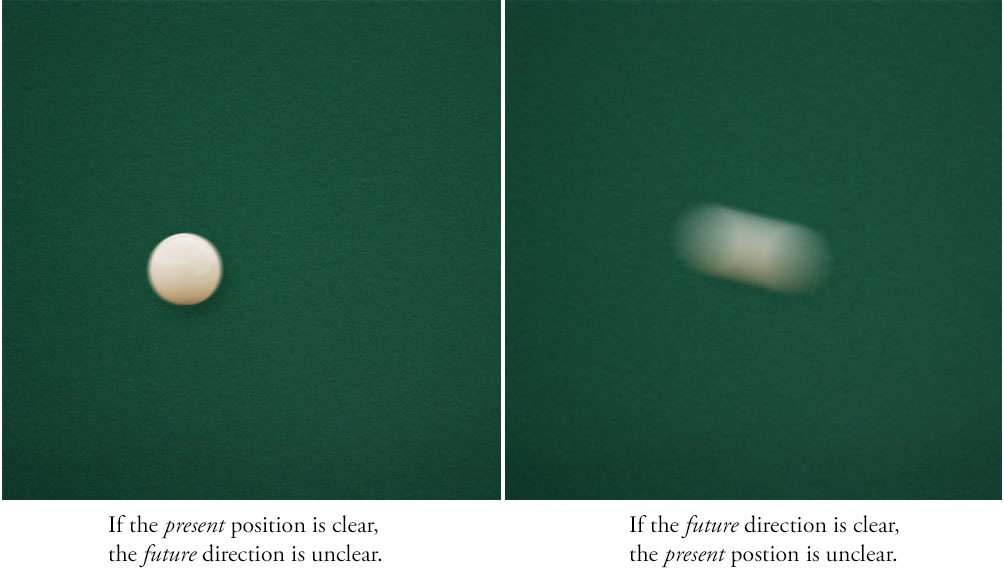Core: We need to consciously choose to ignore the present if we want to see the future, or ignore the future to see the present. Trying to do both, leads to not being able to do either. Gingko is the only tool that lets you consciously do both.
I was watching a TED talk on the future of aviation. It’s titled “A 3D printed Jumbo Jet?“. That’s something I wanted to see, but I should have known what kind of talk to expect from the question mark in the title.
The talk basically goes through all manner of hazy thinking about the future of aviation, of manufacturing, etc. The specifics are sparse, and were always based on a mockup rendering, or on vague statements.
None of the technologies specified will be mature enough to implement in something like an airliner within the next 10 years.
I think this talk (and others of the kind), are a great example of what I call the Uncertainty Principle of Vision. The statement is as follows:
Df Dp = C/2
Here Df is how little you know about the future, and Dp is how little you know about the present. C = total mental capacity of the individual.
This statement says that, if you want to focus on the future, you must intentionally blur your view of the present. Conversely, the more clearly you see the present, the hazier the future is.
This seems counterintuitive. Shouldn’t an expert in a given field be the most qualified to predict the future of that field?
I argue that, no. Experts are terrible visionaries, and visionaries are terrible experts.
The key is that, most people have roughly the same mental capacity C. It might vary by a factor of two or three at most, but few people have 100x the mental capacity of an average human.
It then comes down to a simple choice. Do you go for depth of understanding, or for breadth & scope? Or a mix of the two?
In quantum systems, the choice is truly “either/or”. You either know the position of a particle accurately, and have no idea where it’s going. Or you know clearly where it’s going, but can’t pinpoint where it is right now.

With the breadth & depth choice, we have another option: cooperation. When experts and visionaries cooperate, the combined understanding they have is far greater than either can achieve alone.
The TED talk mentioned is not bad, it’s simply lacking the second half of the team. The expert to come in and show one concrete working prototype of even a part of the vision described.
This dichotomy between breadth and depth is present in much of what we do, but it is completely invisible in our mediums of communication & collaboration. And the reason for that is simple: our written mediums are one-dimensional (yes, even hypertext is one-dimensional).
Here at Gingko, we’re trying to fix that.
In a sense, Gingko is the first two-dimensional medium for the written word. And it lets us consciously choose which mode to write in, to think in. If we want to see the hazy big picture, we look down the left column. If we want to go deep into a topic, we drill into it by going right.

I believe that Gingko will allow people to cooperate unlike ever before, by allowing those with depth of knowledge, and those with breadth, to communicate effectively on the same page. This would revolutionize everything from scientific research, to political systems.